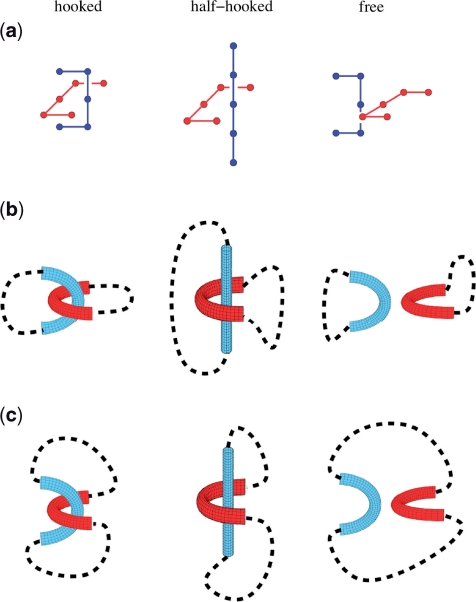Figure 3.
The juxtaposition-centric computational approach. (a) The hooked, half-hooked and free juxtapositions in the simple cubic lattice (Z3) model. The schematics in (b and c) illustrate how conformational enumeration and sampling are conducted in the juxtaposition-centric approach. The geometry of a preformed juxtaposition (tube-like drawings) remains unchanged during a simulation, while the conformational possibilities of the rest of the chain(s) (dashed curves) are either enumerated exhaustively for short chains or sampled statistically using Monte Carlo techniques for longer chains. The connectivity of the dashed curves to the preformed juxtapositions in (b) are for the studies looking at two separate chains, which consider the decatenating potentials, whereas those in (c) are for one-chain studies for the corresponding unknotting potentials. In addition to the three juxtapositions shown here, the juxtaposition-centric approach has been applied to several thousand lattice juxtapositions (84,85).

